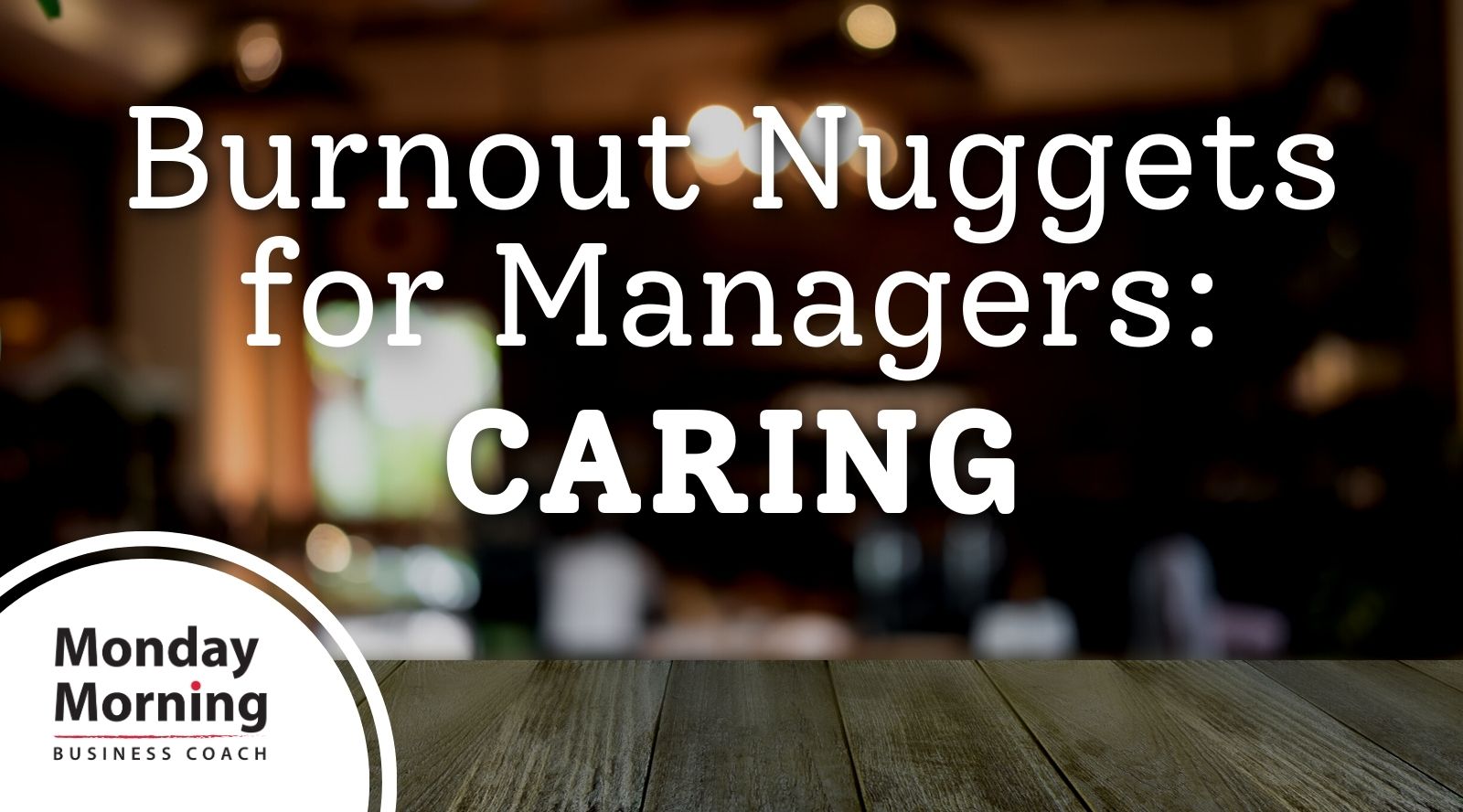Recently, we began a Burnout Series for Managers. In the first post, we noted that the common themes we see in the leaders who are successful in supporting their employees, are ones who model curiosity, caring, and connection.
As a reminder, this is what those look like:
- Curiosity: Genuinely ask how people are doing and what support from you would look like. As you have these conversations, remember to approach people as if you’re standing shoulder-to-shoulder, working toward their individual, team, and organizational success, together.
- Caring and Value: We’ve learned that people feel like they matter to you and belong to something larger than themselves, when you demonstrate that you care about them as individuals and that you value their unique skills and contributions. Being specific when you see them contribute, and curious about how they’re doing during this wild time, will increase their felt experience of being an important member of the team.
- Connection: Building a sense of connection is not a one-and-done. True connection grows over time, by having shared experiences, dealing with success and failure together, talking about development needs, and in having each other’s backs. It can feel like extra work when you first lean in, but the increase in success, the decrease in drama and burnout, and the sense of engagement that fuels the team will accelerate all of your work.
Last week, we focused on some additional details and scripting examples for Curiosity and today, we’re covering Caring and Valuing.
When people have the experience
that they’re cared about and valued,
they’re more likely to feel a sense of belonging,
and less likely to become burned out.
They feel that they can share successes,
and also trust that they can ask for support,
share differences of opinions, and admit failures—
all without judgement or repercussion.
Below are some ideas for actions and conversations with your teams, to demonstrate that you care about them and that you value their contributions.
You may notice that there are some repeats from our Curiosity post and that’s because these three actions are not mutually exclusive…and in many ways, they build on each other.
CARE:
- Say hello and welcome people into a meeting (especially if it’s virtual).
- Be fully present in online and in-person meetings and conversations – put aways distractions like electronics.
- If there is other work that you need to take care of while you’re in a meeting, share that with the group and ask if they’d prefer your video be on or off, or if it’s possible to postpone the meeting.
- Ask about a vacation or how someone is feeling after a sickness.
- Apologize and admit when you’ve messed up.
- Show up to 1:1s and team meetings with warmth and curiosity, asking questions like:
- What are your successes?
- What are your challenges?
- What would support from me/this company look like?
- When do you feel yourself disengaging from work or feeling like, “I don’t care”?
- What one thing would you change to make this a great place for you to work?
VALUE:
- Offer recognition for contributions to the team or the organization (be sure to find out how they like to receive recognition).
- Let people know how their skills help create success.
- Help create a career map with them by asking questions like:
- What are your professional goals and dreams?
- What work motivates you?
- What skills do you love using?
- Are there opportunities here you’d like to work toward?
- Are there any skills or experience you’d like to develop?
- What actions will you take to gain experience and develop your skills?
- Give people opportunities to bring the skills they love using to their work.
And then listen. Really listen.
Summarize what you’ve heard them say and then clarify when needed. Finally, be sure to remind them what you will do with their input and how/when you’ll follow-up, if that’s appropriate to the conversation.
As you have these conversations with your employees and teams about how you work together, remember to stand shoulder-to-shoulder, and let them know you’re in it together.
This week, think about the people on your team and whether or not you’ve demonstrated both care and value in your conversations with them. If you’ve fallen behind in one or both of those areas, that’s okay. You’re human! It’s never too late to start.
Consider adding some of the suggestions to your conversations, to support your employees in avoiding or recovering from burnout.
If you’d like burnout support for
you or your team,
contact us today.


